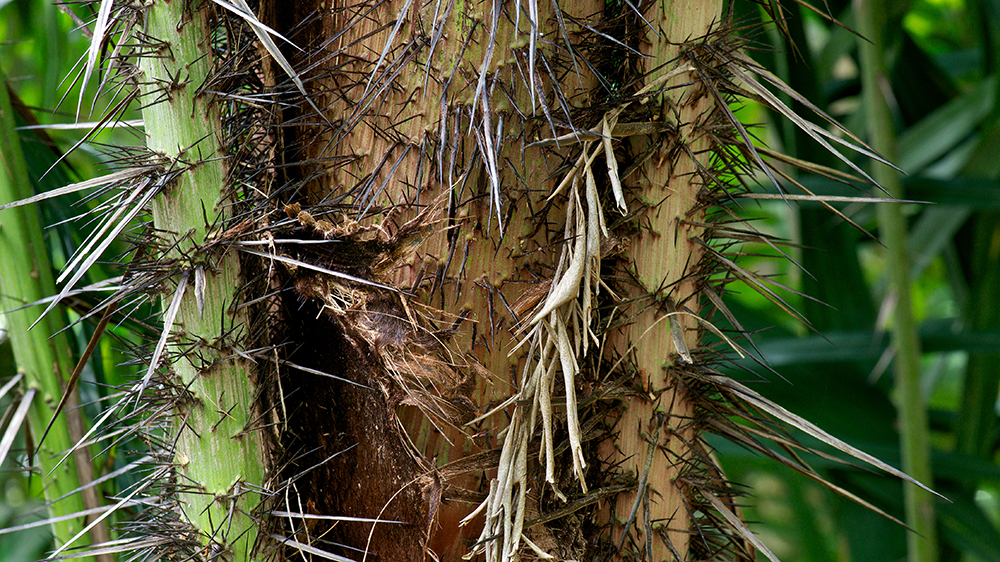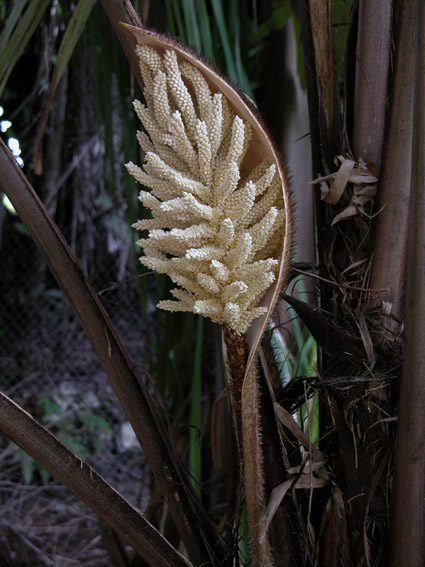
Astrocaryum alatum, also known as the Coquillo Palm, is a spiky-trunked palm native to the montane forests of Costa Rica, Nicaragua, and Panama, and can be found throughout Central and South America. It is threatened by habitat loss.
Taking its name from the star-shaped markings on the seed, Astrocaryum is one of the spiniest palms in the world. The Coquillo is a medium sized palm with a short trunk, and a crown of arching leaves with close, wide leaflets. The leaves, up to six feet long, are dark green above and gray-white below and are very spiny.

Its oval, brownish-yellow, edible fruit grows in a more or less compact bunch.The fruit of this palm tree is edible. The leaves are used to make hats and bags. The indigenous people of the area use its very hard wood to make arrows and even arrowheads.
The fruit of the coquillo palm is a golf-ball-size coconut. The coquille, as it is called, needs to be cracked open with a stone or a machete. Once it is opened, the “meat” is extracted and processed in order to extract its oils. The oil obtained from this operation is used throughout the community to cook with. It is also used by the cosmetic industry.
Animals are unable to climb this tree’s spiny trunk (a defense that protects the tree), but they will wait for the fruit to ripen and fall to the ground. Bees gather nectar from the flowers. Various rodents eat the seeds and pulp of the fruit, while birds and monkeys eat only the pulp.
There are two Astrocaryum alatum thriving in the Merwin Palm Collection.
Want to “virtually explore” the Merwin Palm Collection? Search through our archive of Palm Facts of the Week, featuring palms hand-planted by W.S Merwin. To search through the Online Merwin Palm Database, visit this link.
If you’re inspired to help The Merwin Conservancy preserve and care for the world-renowned Merwin Palm Collection into the future, please consider making a tax-deductible donation.

